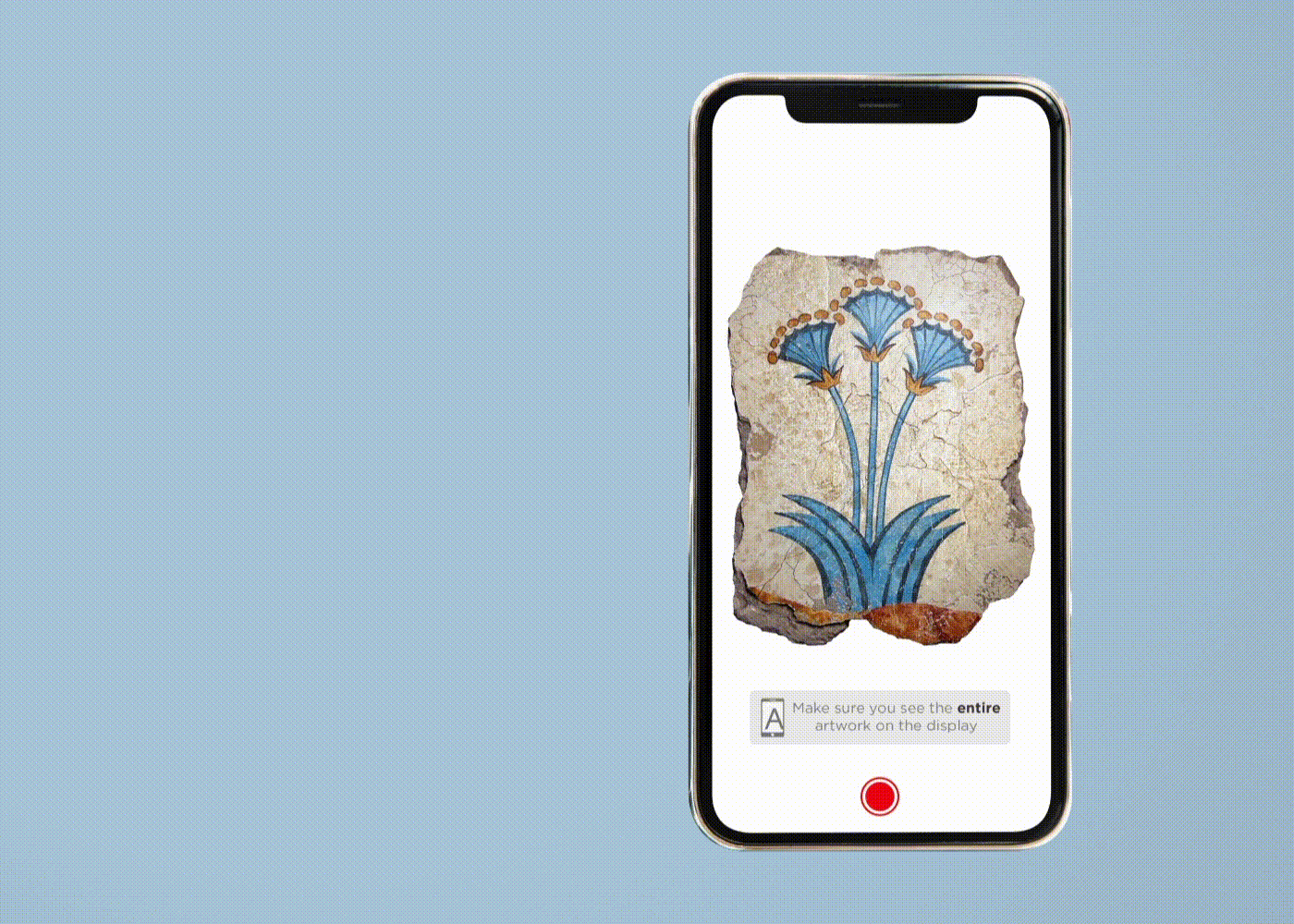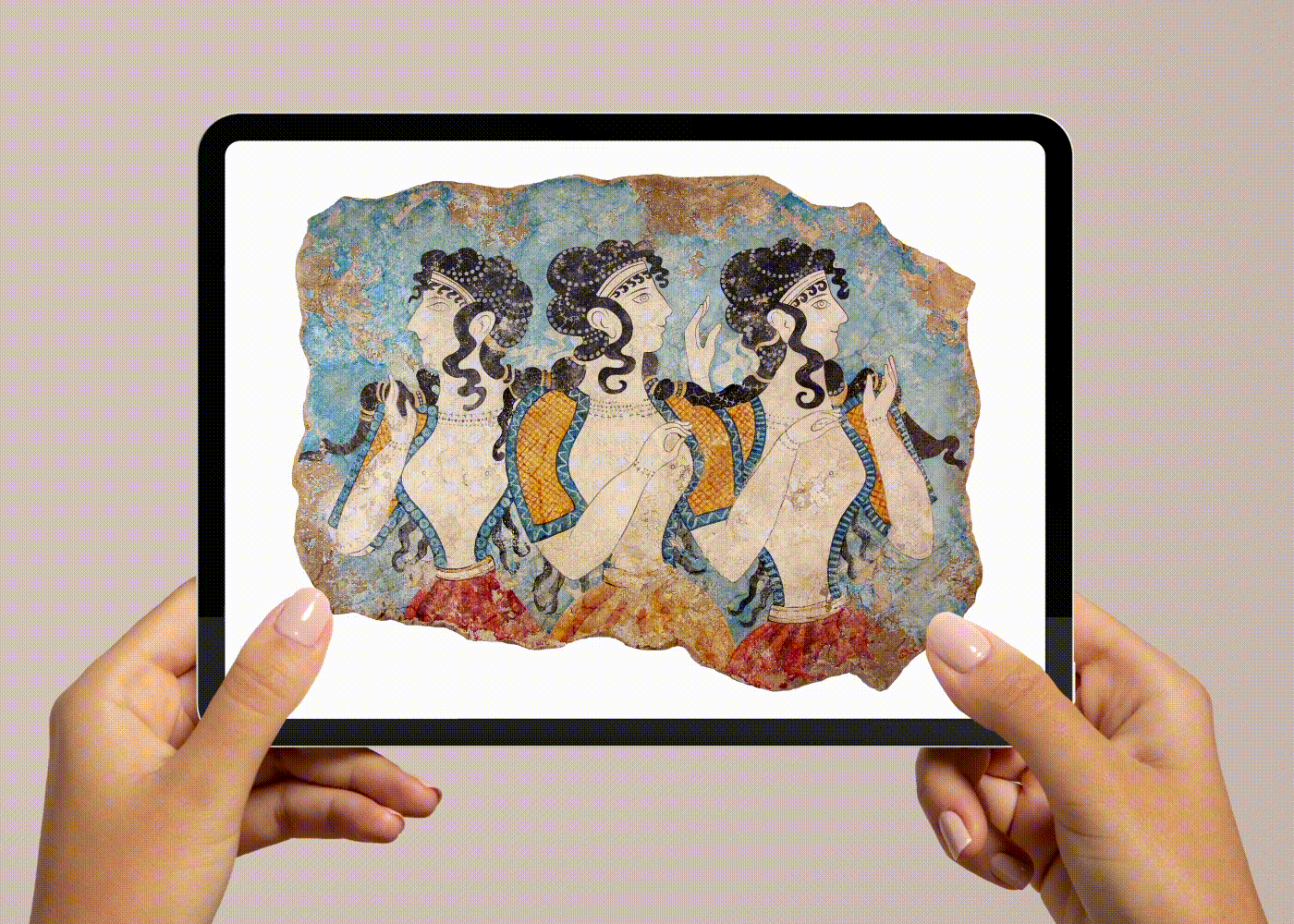
Augmented Ancient Art
// personal art project based on emerging media technologies
Augmented frescoes is an augmented reality (AR) art project that aims to explore the creative possibilities in combining museum exhibits, augmented reality and ancient art.
Through the use of an augmented reality application the museum visitors get expanded into historic two-dimensional animations in real time, so AR deepens and enriches their experience by blending the old and the new. Wouldn’t it engage the viewers more, if they could see not only the remains but a specimen brought back to life?
The project was initiated as part of my Digital Humanities studies at the ITMO University. The result of this project is for now, the two visual artworks devoted to among famous Minoan frescoes: «Ladies in Blue» and «Blue Lilies».
ITMO University
Master's program in Digital Humanities
App: Artivive


“It is impossible to disregard the suspicion
that their painters have tempered their zeal for accurate reconstruction
with a somewhat inappropriate predilection for the covers of Vogue.”
Evelyn Waugh, 1929

How to use it?
To unlock the digital layers of the augmented reality artworks, you need to download the Artivive App that can be found for free in the App Store and in the Play Store. Or simply use the following QR-Code

After downloading and installting the app, the next step will be starting the app and pointing the device at one of the following artworks

The "Ladies in Blue" fresco is a recreated fresco from the Palace of Knossos on the island of Crete. It shows three women richly dressed and lavishly bejeweled depicted against a blue background. This fresco (or rather, fragments of it) was discovered during the excavation of the site by the British archaeologist Sir Arthur John Evans at the beginning of the 20th century. Subsequently, the fresco was recreated by the Swiss artist and archaeological Émile Gilliéron. However, the validity of his reconstructions has long been debated.
Neopalacial period, 1600 - 1450 BCE. Archaeological Museum of Heraklion, Crete.

The "Minoan Sea Daffodils Lilies" fresco was found during the excavations conducted by Spyridon Marinatos from 1967 to 1974 at Akrotiri on the southern coast of the ringed islands of Santorini (the Pompeii of the Aegean) which was covered by thick deposits of ash and pumice from the great Bronze Age eruption of the Santorini volcano that occurred between 1627 and 1600 BC.
Neopalacial period, 1600 - 1450 BCE. The National Archaeological Museum of Athens, Greece
Thank you for watching






